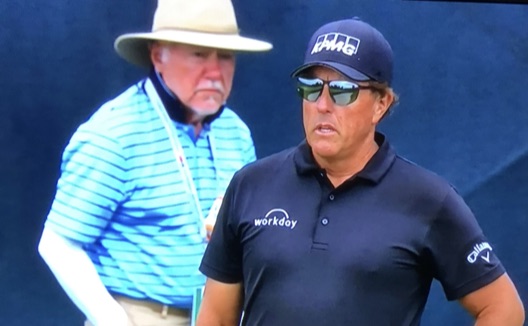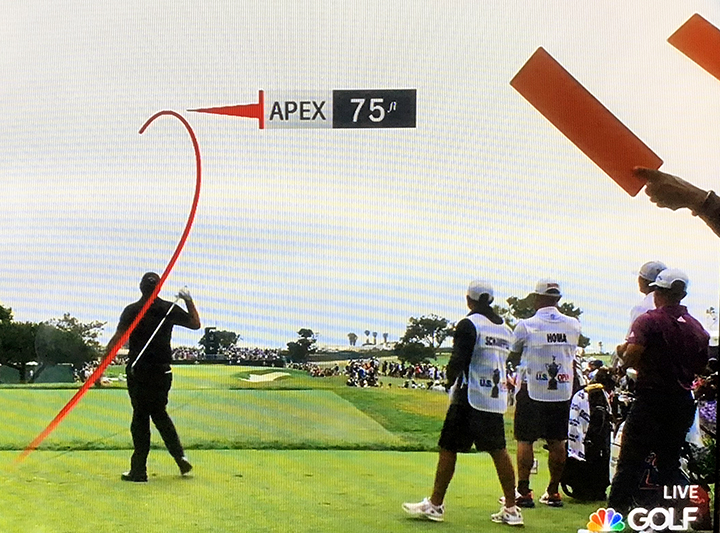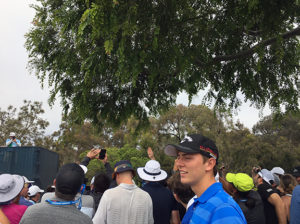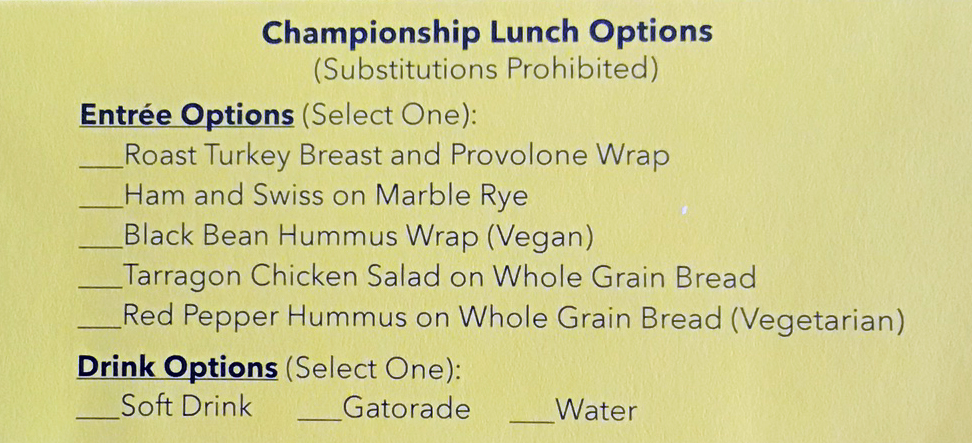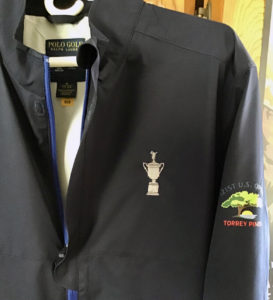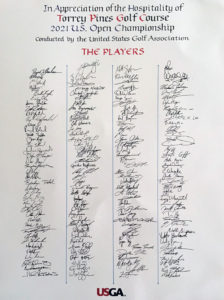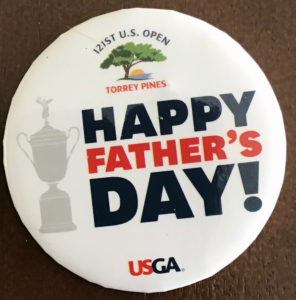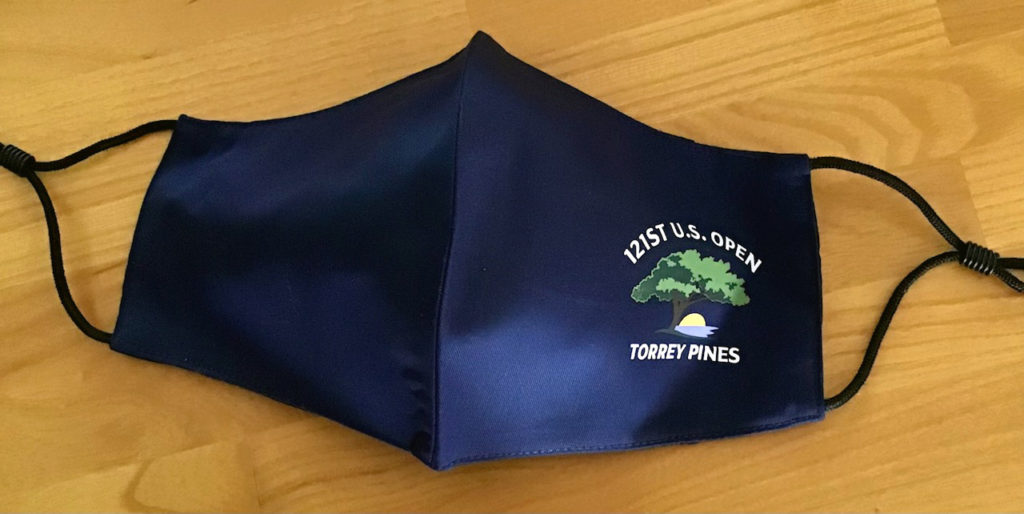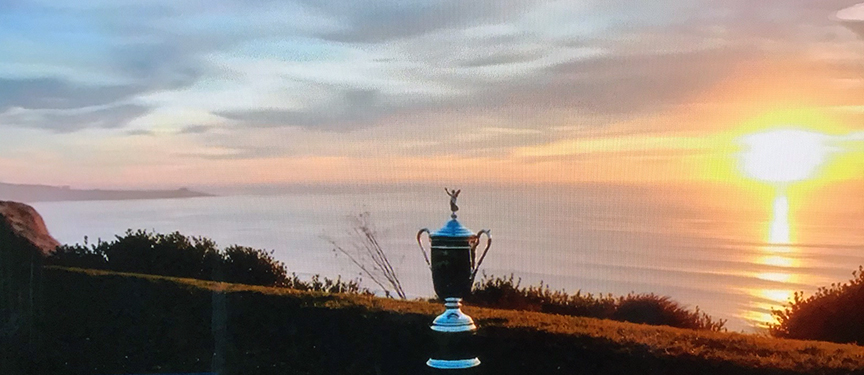
Dorothy Parker, one of the great wits and writers of the mid-20th century, is quoted as saying that, while she hated writing, “I loved having written.”
Regarding my time as a hole captain at the US Open Golf Championship June 14-20 at Torrey Pines, I can say, “I loved having been hole captain.”
Let me cut to the quick, though, before I tell you why and share other info about the Open.
On Friday afternoon, June 18, during the second round of the tournament, I received a text from one of the marshals with whom I had worked earlier saying I was “very photogenic.” Thanks, but what brought that up? Shortly thereafter, got a text from classmate and old friend Kevin O’Malley about my “amazing cameo.” I didn’t know to what they referred until I got home that evening and looked at the telecast. This was it.
I was assisting the two marshals assigned to the green when popular players were at the hole. Crowds just made it more difficult, especially when tee shots went awry. Thus I was there when Phil Mickelson teed off. This screen shot from the telecast shows just how offline his tee shot was.
When shots such as this happen, marshals move to locate and protect the ball from fans, requesting them to provide space around it. When the player and caddy arrive, they may ask marshals to remove crowd control ropes and poles. Television, I knew, was likely showing Mickelson in his predicament, following him as he considered how to play his next shot. At one point, the director switched cameras to one behind the hole, putting me briefly within camera view.
Some people said I looked “angry.” I prefer the description offered by classmate and friend Ed Hattauer, who said I had a look of “fierce concentration.” I think I was just tired.
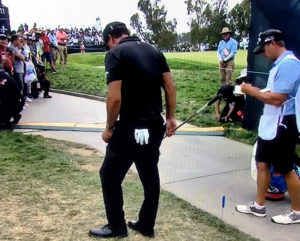
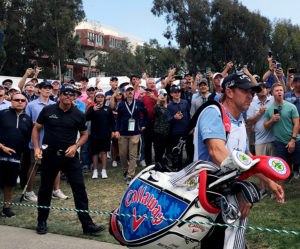
For several years, I had volunteered as a marshal and hole captain at the Farmers Insurance Open held at Torrey Pines each January. An added benefit to doing so, I thought, was that it might give me an advantage in being selected as a volunteer for the US Open. Maybe it did, but the coronavirus pandemic likely had much more of an effect in tamping down the number of potential volunteers from around the country.
In any case, I was invited to be a volunteer and then later invited to be a hole captain. Allowing the public to view the tournament, however, remained an open question for a long time. The Farmers tournament took place last January, but without fans. I was told that it was not until about three months before the US Open was to begin that a limited number of fans became possible.
Volunteers had been told that all would have to provide either proof of full vaccination or a negative test within 72 hours of the beginnings of their shifts. Shortly before the tournament began, the United States Golf Association (USGA), sponsor of the US Open, announced that a maximum of 10,000 fans could attend Thursday-Sunday. They also said everyone attending the tournament, including fans, had to show proof either of full vaccination or a negative test. The nearby University of California San Diego (UCSD) medical staff operated testing facilities adjacent to the tournament entrance.
We were required to wear masks at all times the first day. On Tuesday, June 15, a previously announced state-issued relaxation of COVID-related restrictions went into effect. We were then advised to wear masks when we were close to large groups of people, particularly standing close, facing them.
So, to the tournament.
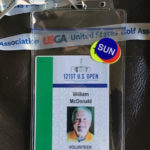
I was assigned as hole captain for #11 on Torrey Pines, South Course. Compared to the North Course, the South is considered of greater “championship” quality. During the Farmers tournament, players play on alternate courses in the first two rounds, with the final two rounds played on the South.
Ironically, in each of my first two years as a volunteer at the Farmers, I worked on 11 North on Thursday/Friday and on 11 South on the weekend. So my assignment on 11 South for the US Open was something of a bookend moment.
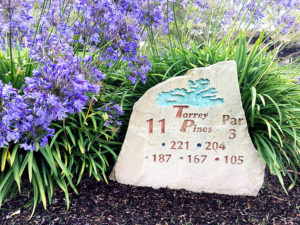
11 South is a long par 3. For the practice rounds Monday-Wednesday, the tee was set back as far as it could go, creating a 225-yard hole. The first golfer on Monday morning, practicing as a single, with only his caddy along, stood at the tee and gazed out at the hole. Sighing, he said, “It’s so far.”
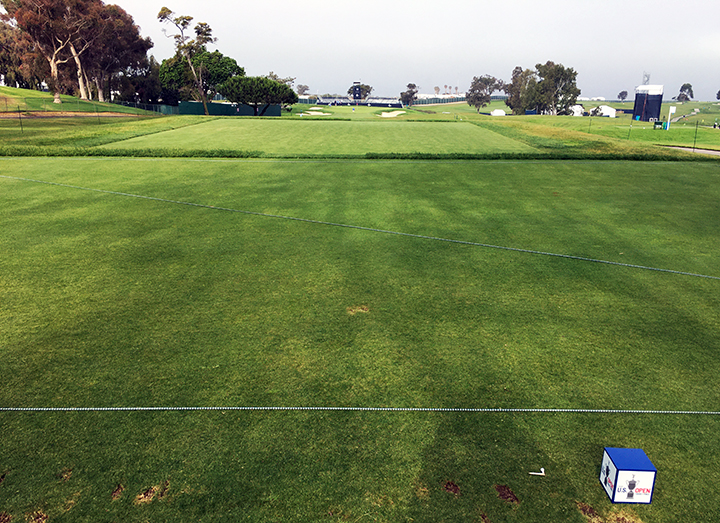
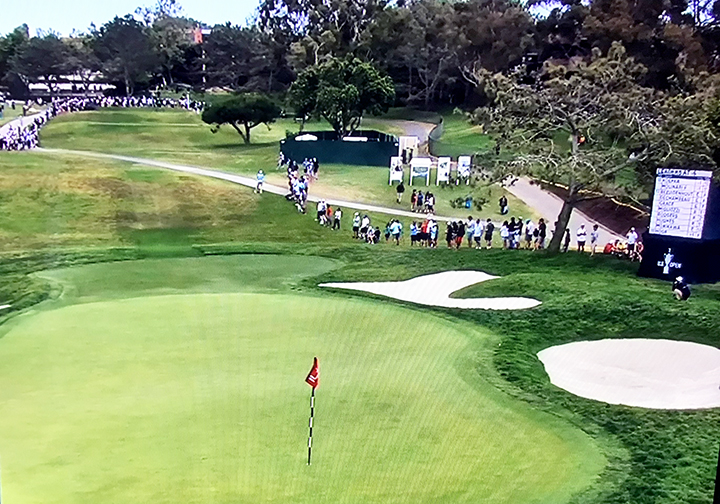
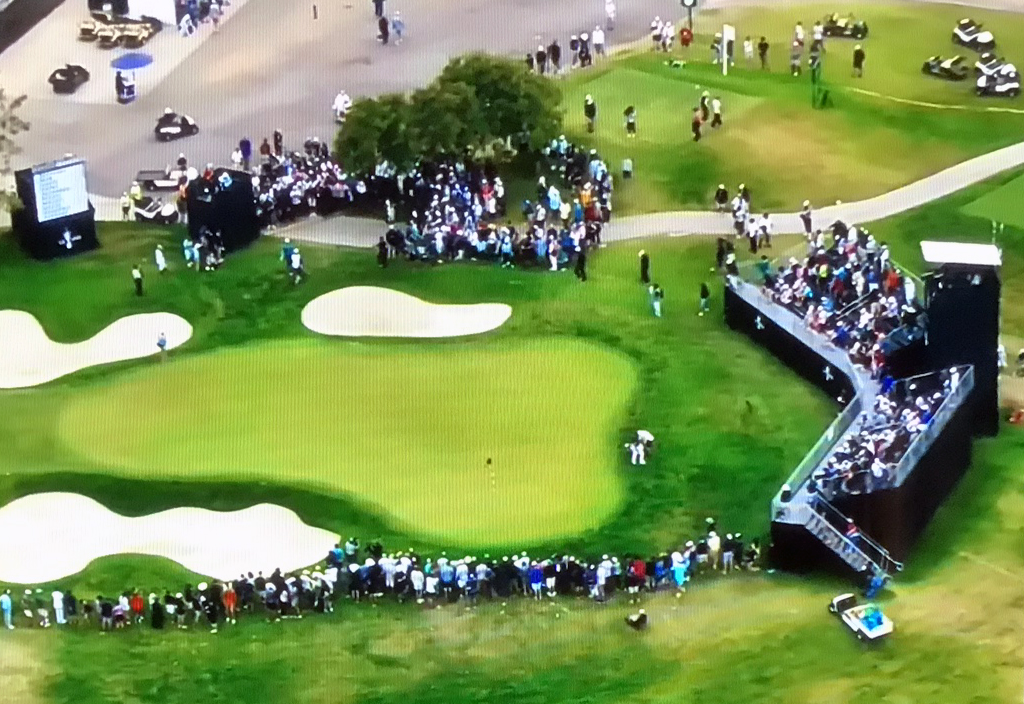
Later that morning, a larger group came to the tee. It included Phil Mickelson, Bryson DeChambeau, and teen protege Akshay Bhatia. Mickelson hit his tee shot beyond the pin, which was located on the front lower level of the green. The ball started to roll back toward the pin and was looking really good. “Oh no!,” said Mickelson. “Don’t be a 1. Not now!” The ball slid quite close by the pin, but ended up several feet past it.
No fans were on the course during the first two practice days. I was at the course, along with three marshals assigned on those days. I still don’t understand why we were there. The issue, in terms of marshals, at 11S is the crosswalk, shown in the view from the green (above). With no fans, the only traffic on the crosswalk was carts. On those first days, lots of “stuff” was being transported by electric and gas carts. I had a marshal at each end of the crosswalk to place and remove a rope barrier when carts sought to cross, depending on whether players were on the tee or walking toward the hole.
Golfers practice on Monday/Tuesday at the Farmers, too, with no marshals and somehow that works. Most of the cart drivers have worked at previous tournaments and know to look at the tee before using the crosswalk. With a marshal at the tee and green, in addition to the two at the crosswalk, that used up the four assigned. It meant there was no one to relieve a marshal for a bathroom break or lunch.
I had been surprised to learn a few days before the tournament that there were 29 marshals assigned to 11S. That was far more than I expected. At the Farmers, when I had been hole captain at the 615-yard par 5, I never had more than 20. Whereas marshals at the Farmers received day-long assignments, however, the USGA had two shifts — morning (7-noon) and afternoon (noon-8 pm). (The 8 pm was in case there was a delay.) I dealt, therefore, with two groups of marshals each day, which added to the complexity.
To help in planning marshal assignments, I downloaded an app. Well, I brought a tablet, a small pad of paper, and a writing instrument, a pen. Drawing a sophisticated representation of the space, I would indicate placement of personnel on each shift. Here’s an example from one of the shifts during the tournament itself.
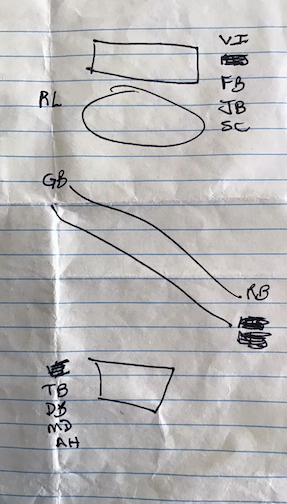
Wednesday didn’t feature a pro-am, as the Farmers and most other tournaments do, but the course was open to active duty members of the military and veterans, and their families. There were more people to manage, but far fewer than during the tournament itself.
I mentioned the marshals being assigned to shifts. Most were assigned to one shift on multiple days, a few did consecutive shifts on the same day. Pretty much all of them were assigned to no more than three or four shifts total. I should point out at this time, however, one exception. For the privilege of being hole captain, I was assigned to each shift, each day. That meant, counting driving time, 12 to 14-hour days Monday-Wednesday. At least, in June, I didn’t leave and arrive back at home in the dark, which was often the case in January at the Farmers. A small consolation, however. It still meant getting home, grabbing something to eat, and then pretty quickly going to bed to get at least some sleep before getting up at 4:30 to start over.
I came home really tired those first few days. According to my steps app, I started off on Monday of tournament week doing 11,928 steps and six “flights climbed.” That’s a little more than six miles. There is also a fair amount of elevation change on 11S. The tee is significantly elevated. Walking back and forth on the hole, which was what I did much of every day, was taxing for me, who had probably averaged a couple of miles a day, and that’s from mostly walking the dog. After a few days, however, I realized that those early days were getting me more fit to handle the rest of the week. I actually felt better as the week went on.
Overall, Monday-Sunday, I walked 89,228 steps and 56 flights. That’s about 45 miles, an average of 6+ miles a day. My highest totals came on Thursday, day of the opening round. That was the first day we had a full complement of marshals, 9-10 each shift, so I was more than usually active and mobile. The totals on Thursday were 16,129 steps and 12 flights.
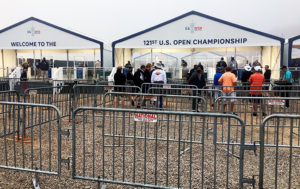
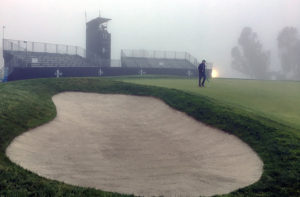
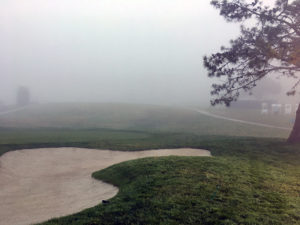
Thursday, the day of the first official round, got off to a slow start. Morning fog, the “marine layer,” covered sections of the course, including the area around 11. Start of play was delayed 90 minutes and I didn’t get to leave to go home until 7:30 pm. Several groups didn’t finish before dark, so play was also delayed on Friday morning for them to complete the last few holes. (In 2013, my first year volunteering at the Farmers, I spent my first day on 11S on that Saturday. I sat at the tee as fog came and went, and the tournament was delayed again and again. Finally, in mid-afternoon, the PGA called it a day. I had sat there for eight-plus hours, watching the 11th green appear, disappear, appear . . . . Sure was worried that might happen again.)
As with previous tournaments, my attention was focused on one hole and, even then, not on the golf played there, per se. The focus was on managing the situation, i.e., the marshals, fans, players, caddies, and their interaction. I might see the leader board on occasion, and notice who was leading, but it had little relevance to my job. Interestingly, besides the Mickelson event noted earlier, there was not a lot of action on 11S until the last day, and the last few groups.
When the leaders began to come to 11S on Sunday, there was quite a number of them near the top. It seemed at the time logical to expect a playoff among players tied for the lead after 18.
American Express had been handing out devices that carried on-course live audio coverage of the tournament. It was limited to the event and the location. You needed an American Express card to get one. American Express and I had a troubled relationship years back, so I didn’t have an AmEx card. Walking around on Saturday, I believe, I saw one of the device boxes lying on the fairway. I picked it up to dispose of it, expecting it to be empty. It felt heaver than empty, though. I opened it and found a device, which helped me keep track of things going on in the tournament.
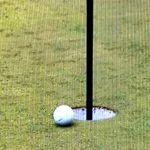
Listening to reports, I learned then that holes 11-13 had been the most difficult on the course during the tournament, with 11 being the hardest. Well, those holes were where some of the leaders started to fall off the pace on Sunday. Starting with Bryson DeChambeau. Missing a hole-in-one on 8 by, literally, an inch, he was leading the tournament when he came to the 11th tee. He pushed his tee shot into the rough to the right of the green. Chipping onto the green, he two-putted for a bogey. DeChambeau followed that with another bogey on 12 and a double bogey on 13. He had 44 strokes on the back nine and finished at +3, tied for 26th.
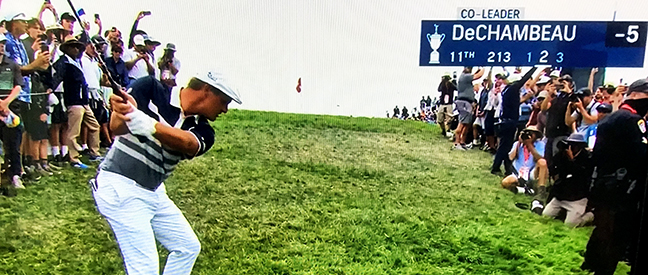
The last twosome — South African Louis Oosthuizen and Canadian Mackenzie Hughes — provided an exciting finish for 11S. Oosthuizen hit a shot similar to Dechambeau, to the right of the green. Hughes hit a major hook.
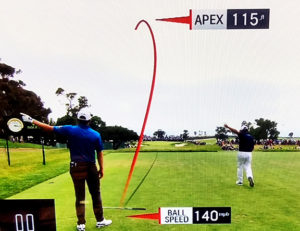
His ball struck the cart path to the left of the green, bounced up . . . and never came down. The crowd — by now, it was a crowd following the last twosome — gathered around where the ball had bounced and some started looking up. Then someone, and then someone else, saw the ball, caught among the branches of a tree.
As Hughes, his caddy, and tournament officials got to the scene, and saw the ball, the crowd began to chant “Shake the tree! Shake the tree!” I became increasingly concerned that some of them would, indeed, try to shake the tree to loosen the ball.
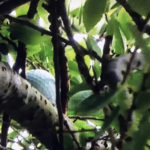 One of the media photographers was able to get a closeup of the ball, and Hughes was able to confirm it was indeed his. The original ball stayed where it was and a USGA official permitted a free drop for a replacement ball on the cart path. A drop to the grass next to the cart path, however, was a stroke penalty. Hughes ended up with a double bogey on the hole, while Oosthuizen, who hit his tee shot to about the same place as DeChambeau, shot a bogey 4.
One of the media photographers was able to get a closeup of the ball, and Hughes was able to confirm it was indeed his. The original ball stayed where it was and a USGA official permitted a free drop for a replacement ball on the cart path. A drop to the grass next to the cart path, however, was a stroke penalty. Hughes ended up with a double bogey on the hole, while Oosthuizen, who hit his tee shot to about the same place as DeChambeau, shot a bogey 4.
The average score on 11S during the tournament was 3.39, 13 percent over par, the highest percentage over par of any hole.
When Oosthuizen and Hughes finished at 11S, my job was pretty much done. A bunch of the marshals at 11S volunteered to go to 18 for the conclusion. The USGA wanted to avoid what had happened a month before at the PGA Championship, when fans moved onto the fairway of the last hole, almost surrounding winner Phil Mickelson and Brooks Koepka and creating a potentially dangerous situation. Marshals lined the fairway to prevent something similar from happening at Torrey Pines.
There wasn’t the drama that day, however. Three groups ahead of the last twosome, Jon Rahm had made two long putts on 17 and 18 to finish at six-under-par. Oosthuizen had bogied 17 and needed an eagle on 18 to tie Rahm. He shot a birdie 4, but lost by one.
By that time, I might have gotten home. All I wanted to do when I did get home was . . . nothing.
As I said at the top, I was and am glad to have finished my job at the US Open. I met new people, including lots of great marshals assigned to 11S. That’s likely my last volunteer stint at a US Open Golf Championship. The marshals committee chair for the 2022 Farmers Insurance Open has gotten in touch to see if I’m interested in volunteering again. I answered in the affirmative. I contemplate a pleasant time as hole captain at 3S, one of the prettiest golf holes I’ve seen. Hope it comes to pass.
Confident young golfer
On Wednesday, I believe, I noticed a young girl, maybe 12-13, wearing an “Amherst” sweatshirt. Amherst College is located in Western Massachusetts, the region where I was born and grew up. Later, I saw her and her mother, I figured, near the tee at 11. I approached them and asked the girl, “So, who went to Amherst?” Her mother answered, “I did.” “And,” she added, “I went to Amherst High.” “Wow, a townie!,” I said. “And Croatian,” she said. Yes, she certainly realized how distinctive she was at tony Amherst.
I asked the girl if she intended to go to Amherst. “Oh, yes,” she said. Short pause. “And I’m going to be on the golf team there.” I praised her confidence. I also asked if she would consider attending Williams College, Amherst’s historic and intense rival. “Williams is my backup school,” she said. Ooooookay.
Logistics
In the version of Maslow’s “hierarchy of needs” for golf tournament marshals, near the top are the location of the nearest bathroom facilities and how/where do I get lunch.
Interestingly, for us at 11, those were both at about the same place, and not particularly close. To visit a porta potty, we had to walk a couple of hundred yards past the grandstand on 11 that was at the rear of the green. Not terrible, but another elevation change, and significantly farther if you were at the crosswalks or, especially, the tee.
Because we were never flush with marshals, it was especially difficult to release people to go to get lunch and sit down to eat it. I encouraged marshals who had afternoon shifts to get lunch before reporting, and asked morning shift marshals to wait for their relief. Too often, however, it was not always possible. I tried to take people’s places to allow them to get their lunch and bring it back to their post. That meant that almost every day I was able to get to the lunch stand only near the end of the time slot (11 am-2 pm). I had the ham and Swiss once. I almost had the tarragon chicken salad once, but I realized the mayo-laden chicken salad had been sitting out in the heat for quite a while. The hummus options were usually the only ones available, so I concentrated on the chips and cookies.
At least for the fans, alcohol was available more readily.
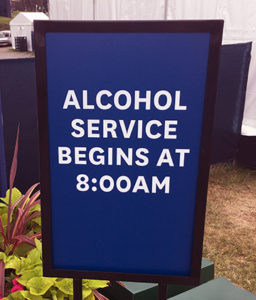
Close call
On Friday, I was assisting at the green and moved to its right side when a shot landed among the fans there. As I motioned people to move back, I heard people yelling, “Watch out!” A ball then plopped down very close to me and rolled to within a foot of the previous ball. That’s when I learned you can mark your ball on the fairway, or rough in this case, not just on the green. Each of the players, who were not going to make the cut, got up-and-down for pars.
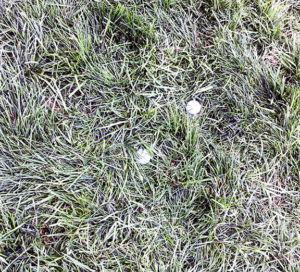
Swag
For the ~$150 I paid to volunteer at the US Open, I got a ball cap, two polo shirts, and a rain jacket. The shirts and jacket were Ralph Lauren Polo. Some of the marshals assigned to 11S who had also worked the previous US Open at Torrey Pines in 2008 didn’t think the quality of the shirts was as good as at the previous Open. I wasn’t a fan of the “look,” but I think the jacket is pretty nice.
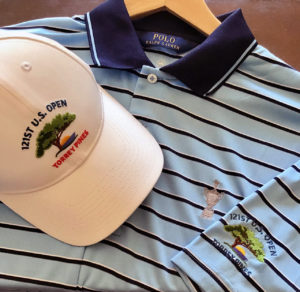
To identify me as hole captain, I was provided an armband. When I started to put it on, I realized how large it was in circumference. The average size of biceps for men my age is 12.9 inches. As a smaller-than-average guy, mine may well be even smaller. The USGA armband was 15-1/4 inches in circumference, so maybe they intended it for Bryson DeChambeau or Brooks Koepka, not me. There was also no velcro option to make it smaller. Poor design. I was advised by a USGA rep to just hang it around the lanyard that held my credentials.
The armband was mine to keep, so that’s a nice memento. I would have dearly liked to have the US Open hole flag that flew on 11, but I assume that graces the den of a major donor to the USGA.
Post-tournament, the USGA sent me, and I assume all volunteers, a replica of a poster of appreciation signed by all the players. That was a nice touch.
Sunday at the US Open Golf Championship traditionally falls on Fathers’ Day. USGA reps handed out a button acknowledging the day to likely dads, both volunteers and fans.
And, to mark the circumstance that has had impacts on all our lives, we were provided US Open face masks. I hope it is a one-off and none will be necessary at future tournaments. I expect this may be a curiosity item in years to come. “Why did great-grandpa have a mask for the golf tournament?”

